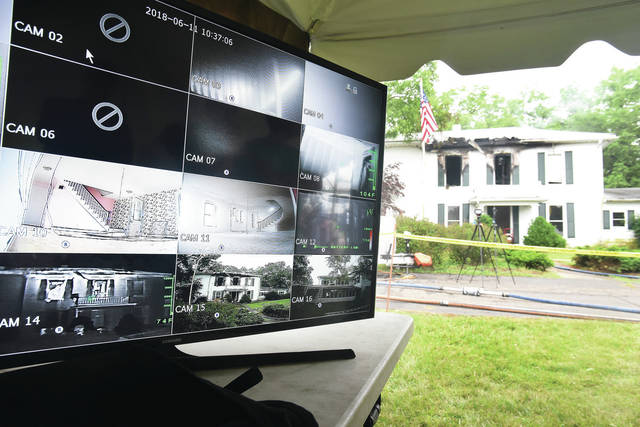
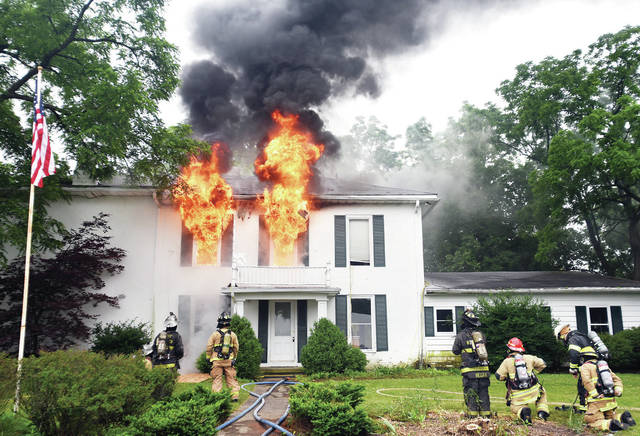
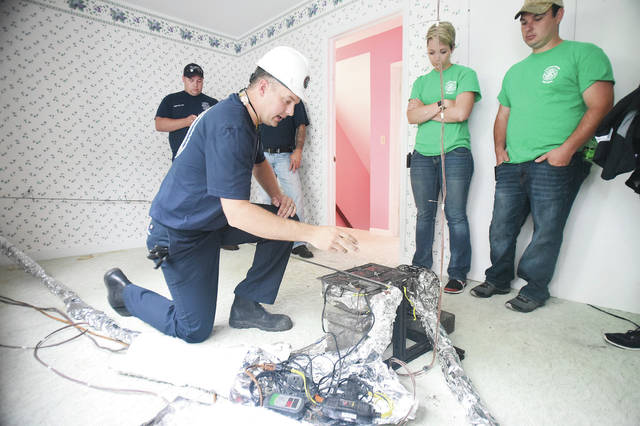
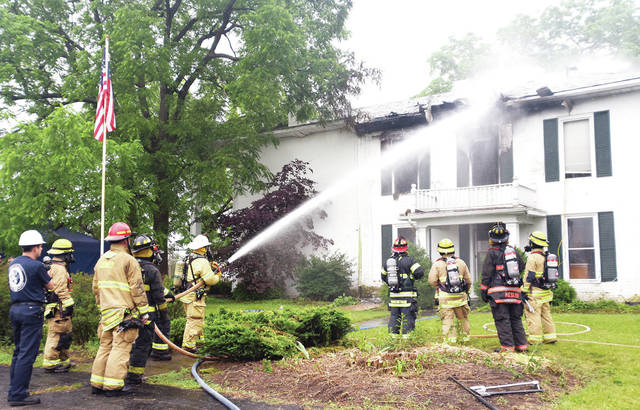
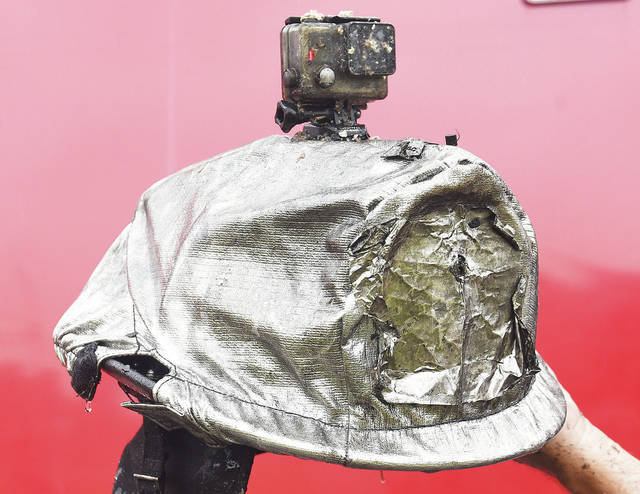
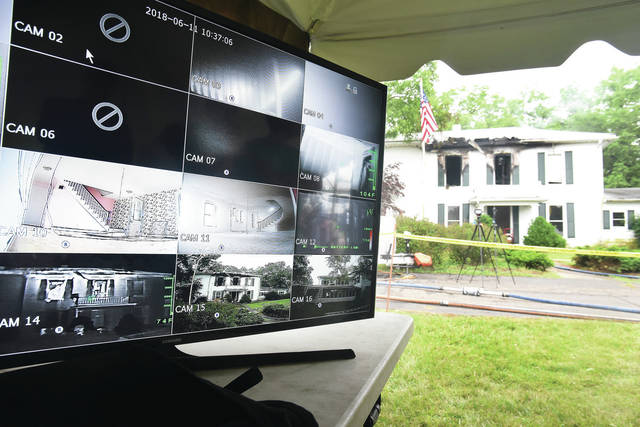
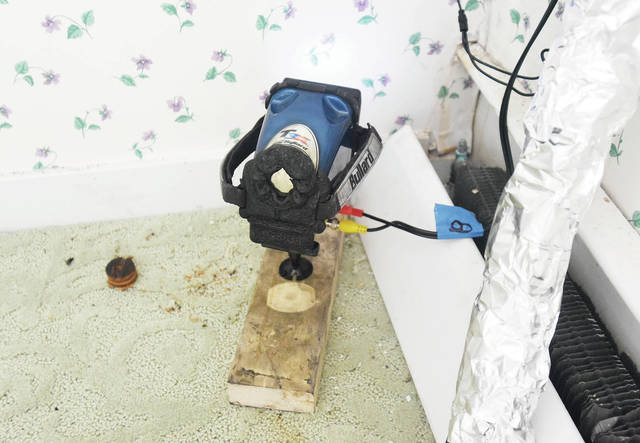
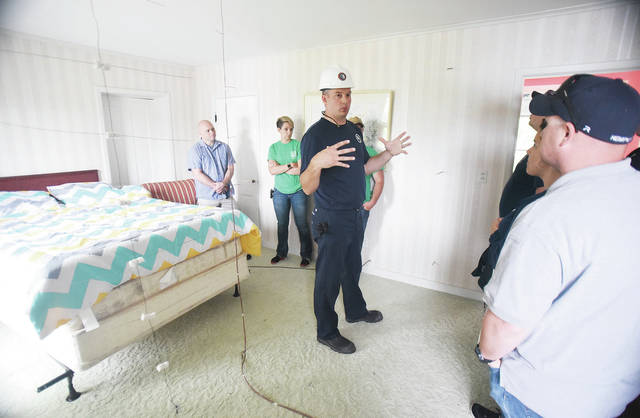
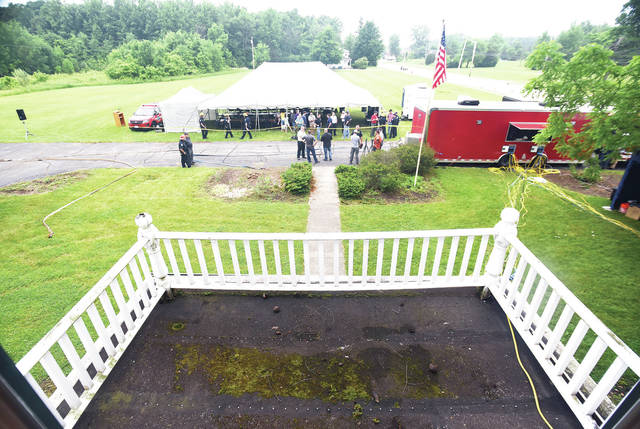
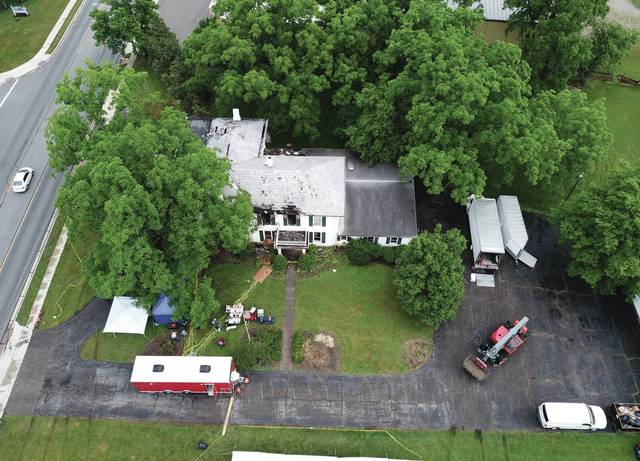
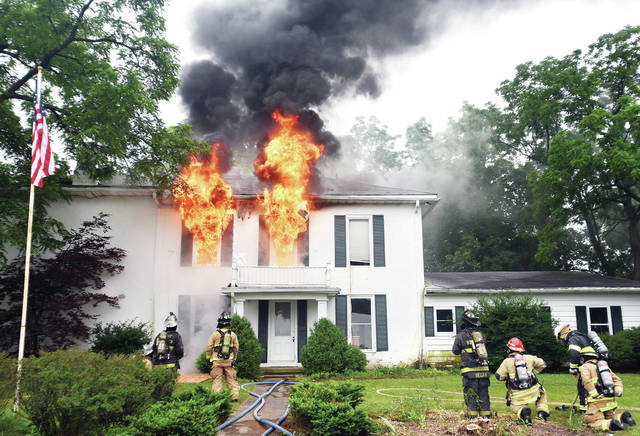
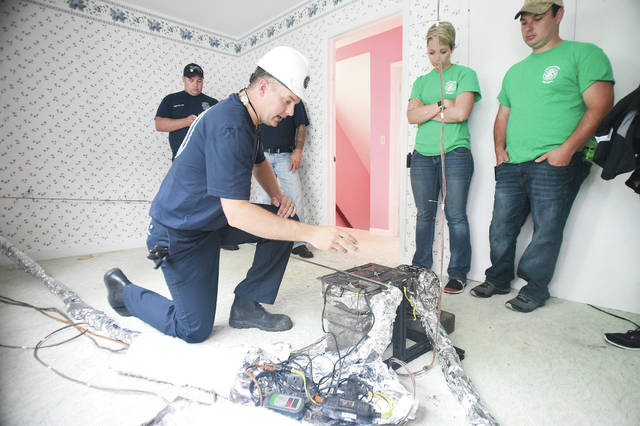
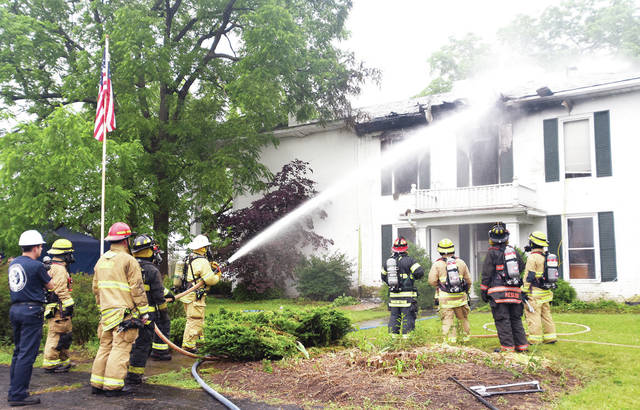
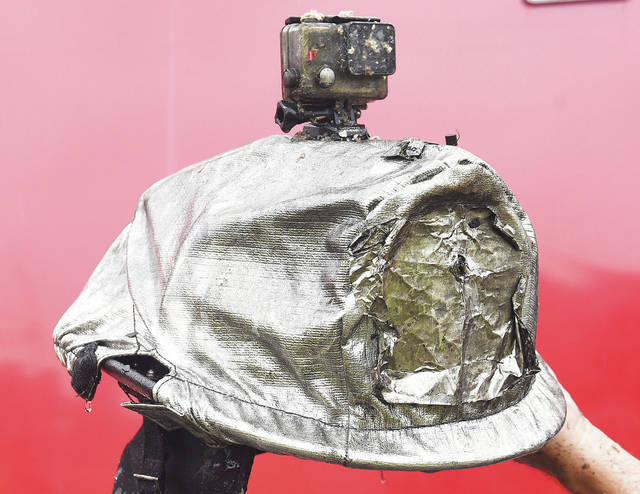
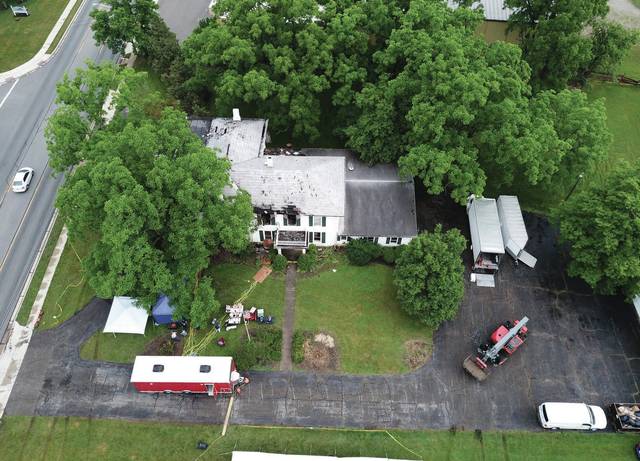
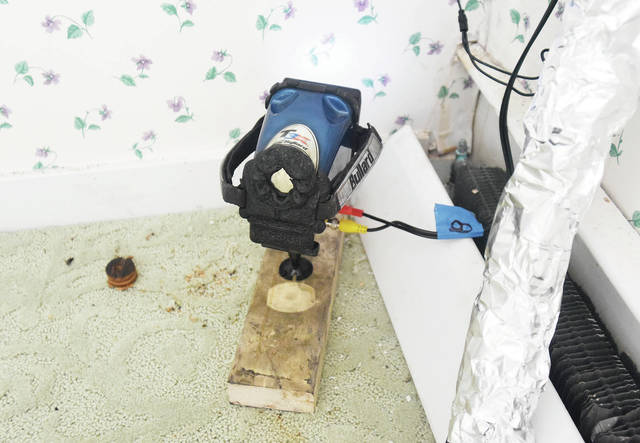
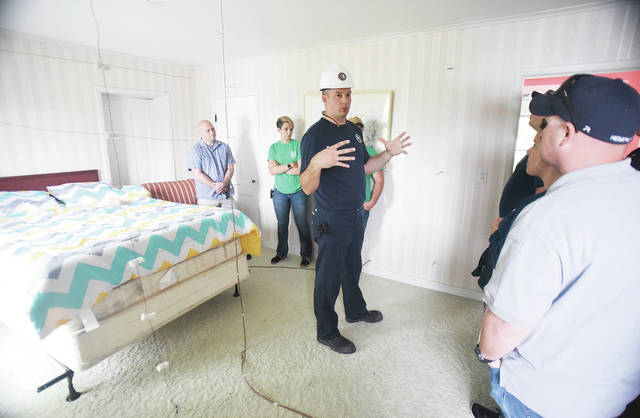
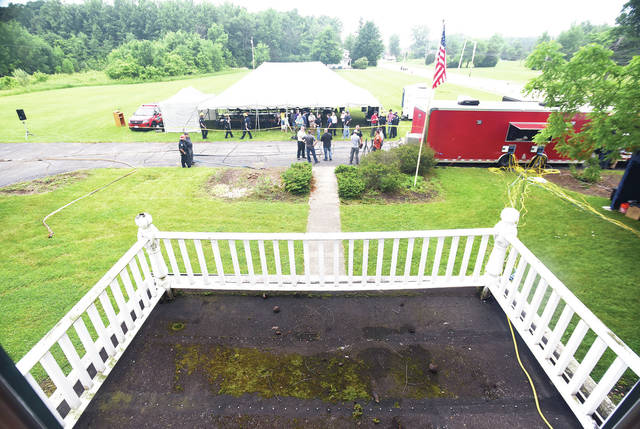
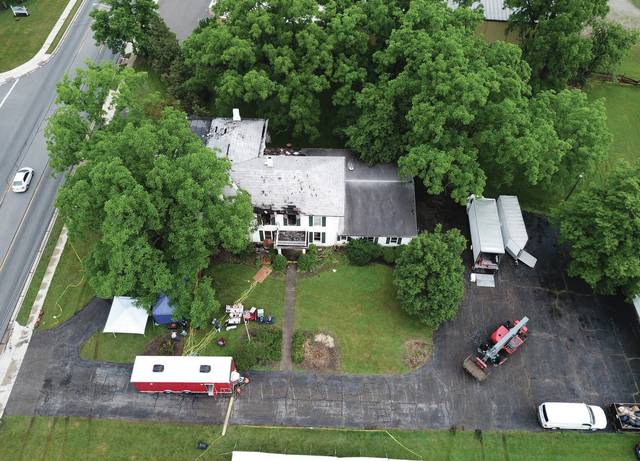
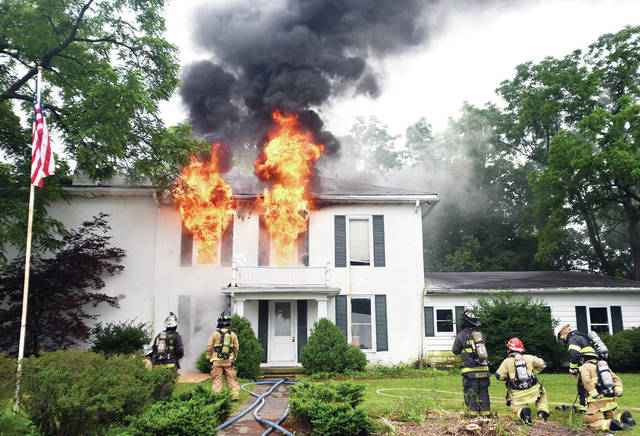
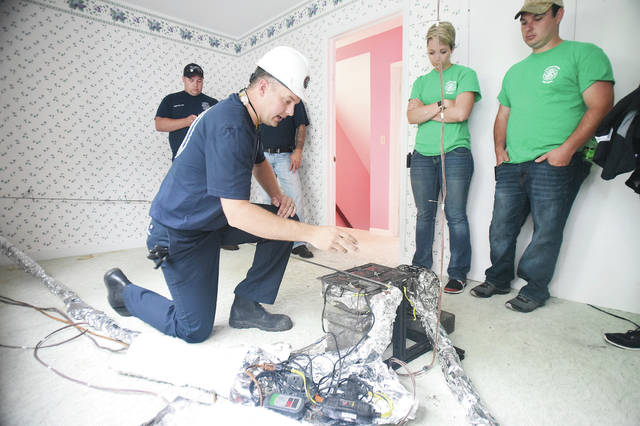
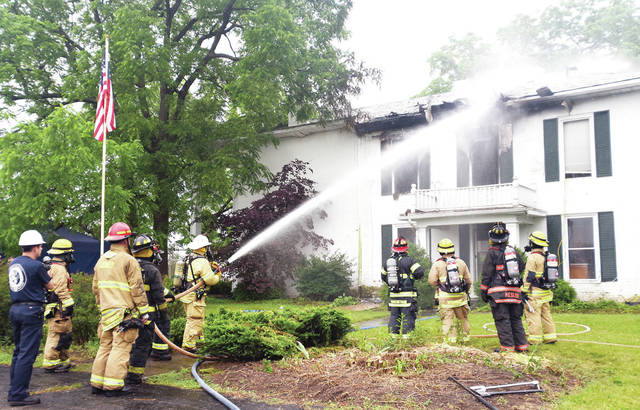
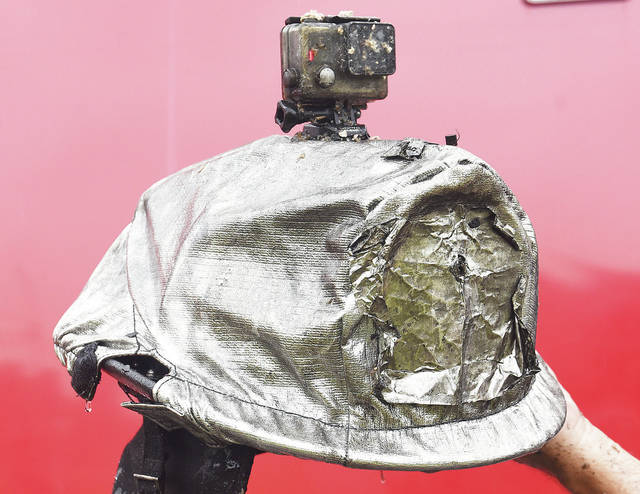
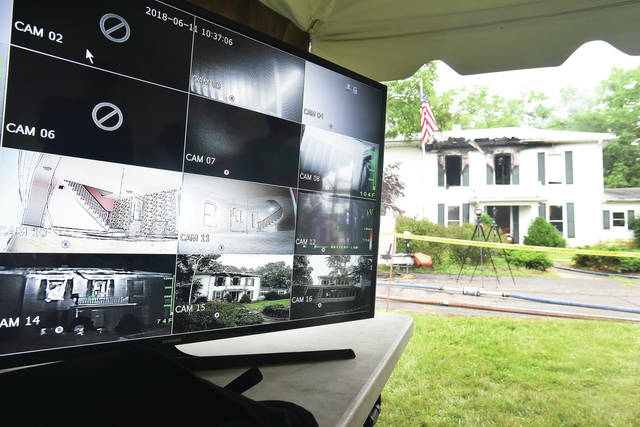
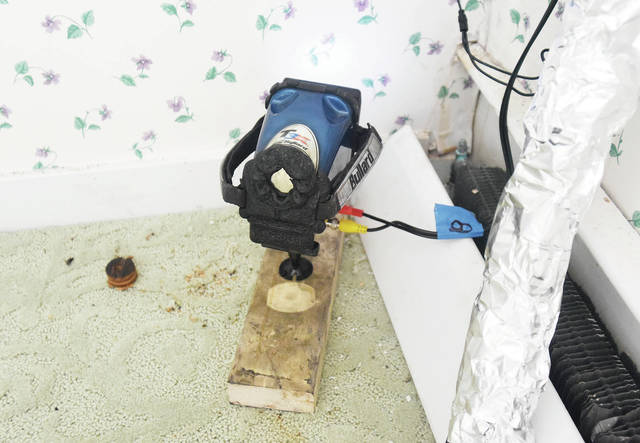
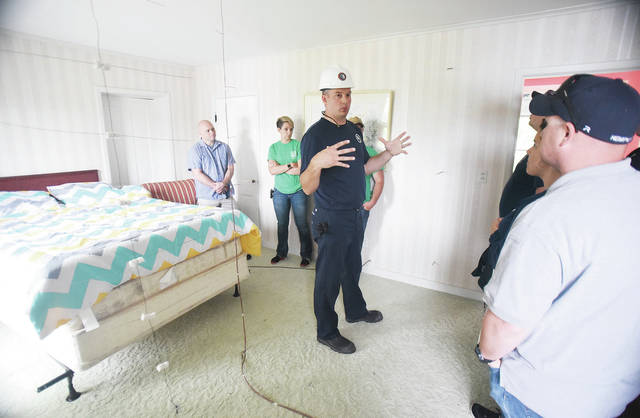
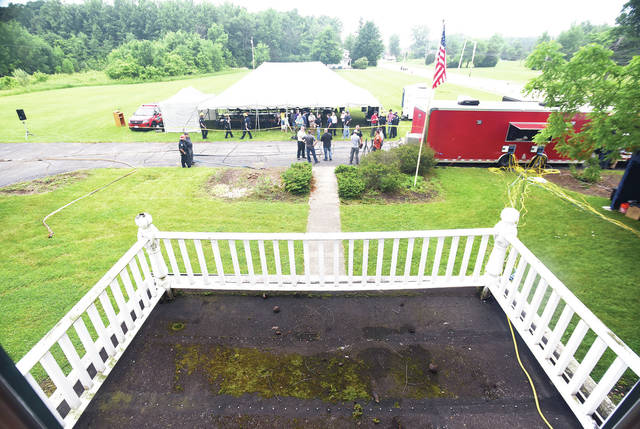
SIDNEY — The public, members of surrounding fire departments and the media attended live-fire research burns Monday, June 11, that were conducted by the Sidney Fire Department (SFD), the UL Firefighter Safety Research Institute (UL FSRI) and Illinois Fire Service Institute Research (IFSI) at one of Sidney’s oldest homes.
Monday’s experiments were to study how water application and ventilation impacts fire’s behavior, occupants in a burning home, firefighters and their methods.
About 100 people gathered Monday morning at the former home of Dr. Ed and Anne Link located on the land of Sidney’s future third fire station at 2401 Wapakoneta Ave. It was the fourth and final Sidney house used during a series of live-fire experiments for improving firefighter safety that were conducted over the last two weeks.
“We’ve had an awesome opportunity over the last two weeks to participate and partner not only with Underwriters Laboratories but with a cross-section of Ohio. We’ve had over 12 different (fire) departments come over the last two weeks and actually participate. And I’m not talking about coming and watching; they came and they put on their bunker gear,” Sidney Fire Chief Brad Jones said at the beginning of the day Monday. “It’s a great opportunity not only for us and for the region, but for the progressive step for tactics and fire safety.”
All four of the homes used in the live-fire experiments are set to be demolished. The first three homes used are owned by the Shelby County Land Reutilization Corporation (commonly known as the Shelby County Land Bank), which often lends their homes to SFD for training prior to demolition.
“It’s been a tremendous partnership with the city of Sidney, (Fire) Chief Jones and all of his staff that have gone well beyond all of our expectations and a partner of working with the fire service,” said Steve Kerber, director of UL FSRI, prior to the first burn experiment. He also thanked the attendees, the Department of Homeland Security assistance to FF grant program and the rotating members of their fire service technical panel that was composed of firefighters from Florida to California.
UL FSRI advances fire research knowledge and develops cutting edge, practical fire service education aimed at helping firefighters stay safe while more effectively protecting people and property. Working in partnership with the fire service, research departments, and agencies, UL FSRI executes firefighter research and makes the results widely available to the global fire community.
Monday’s burn experiments, Kerber said, were part of a much larger project of looking at a coordinated fire attack for examining how firefighter crews come together and combine their tactics for a successful and best possible outcome.
He noted the fire service technical panel that represented the entire American fire service was key to the project for getting the research onto the streets.
The research project was funded from the Research and Development (R&D) section of the Department of Homeland Security fire prevention and safety grants program, Kerber said.
“In studies like this we have the opportunity to understand how the firefighters’ work effects the occupants of the structure,” said Gavin Horn, director of IFSI. “This will be the first time we will be able to look at hydrogen cyanide in a unique way and we can understand what are those exposures and what is the effectiveness.”
IFSI is a part of the University of Illinois and is the statutory fire service academy for the state of Illinois whose mission is to help firefighters do their work through training, education, information and research.
For Monday’s experiments, the large, Wapakoneta Avenue house was boarded up and split to represent two smaller homes. One side was used for experiments on Monday, and the other side on Tuesday, to test how ventilation and suppression interact when putting the fire out. The experiments are intended not only for firefighter safety but also occupant survival inside of a house.
Each room on each side of the house that was set on fire was recreated to be exactly the same with the exact same furnishings on the bed, floor and walls, including window and door openings, to ensure a constant environment for measurements. In areas outside of the room on fire, researchers used various measurement techniques, one which they called a victim package containing pig skin and a certain type of rubber to simulate how human skin would be effected or burned from the fire and smoke.
Attendees were given a walk through of the house before burns began to see and hear about the experiments to be conducted. After firefighters were in place and the fire began, everyone remained behind a blocked off area with a direct view of the fire from the outside. Visitors could also view two large TVs that had a grid of various video views from the inside of the house, including thermal imaging cameras, GoPro cameras while firefighters were inside fighting the fire.
Mayor Mike Barhorst told the gathered crowd during opening remarks the Links never intended for their home to house another family, so he said Anne Link was excited when the city of Sidney expressed interest in the property.
Barhorst shared Anne Link had said, “We have needed a north end fire station for years. I was delighted to learn that the city of Sidney was interested in the property on which Ed and I raised our large family. Ed, Dr. Link, spent his career helping to heal lives as a physician. Knowing that the property will be used as a fire station — a base for others who help to heal lives pleases me, and I’m sure, would have pleased him.”
“It’s somewhat fitting, as the mayor mentioned, that we are in the house of a physician who worked to save lives of so many individuals from this town,” said Horn. “And we are going to be building in instrumentation to be able to understand some of the risks for burns; new information that can provide firefighters knowledge about how we might impact the burn risk for occupants and be able to reduce some of that risk.”
This project in Sidney is UL FSRI’s fifth most recent field test project among other cities such as New York, Chicago, Milwaukee and Toledo. Kerber said it will take about six months to make sense of the data gathered over the last two weeks to present for use.
For more details on the experiments, visit the project page at: https://ulfirefightersafety.org/research-projects/coordinated-fire-attack-utilizing-acquired-structures.html.










